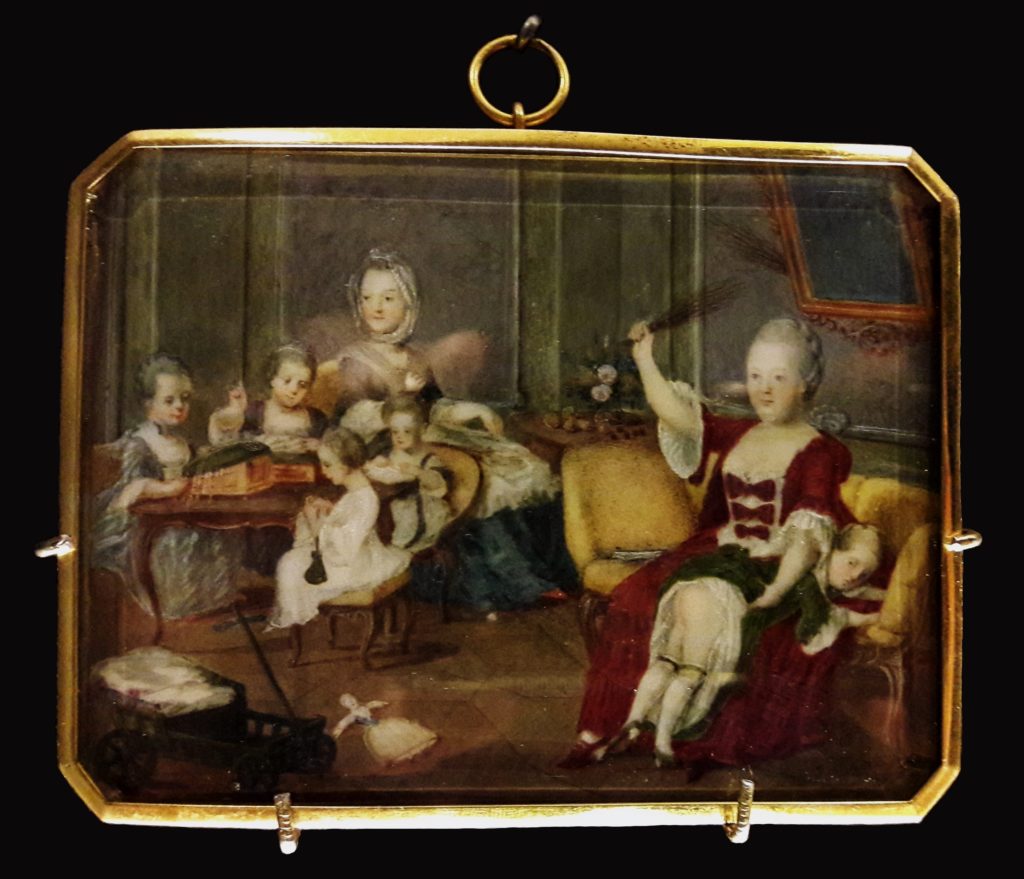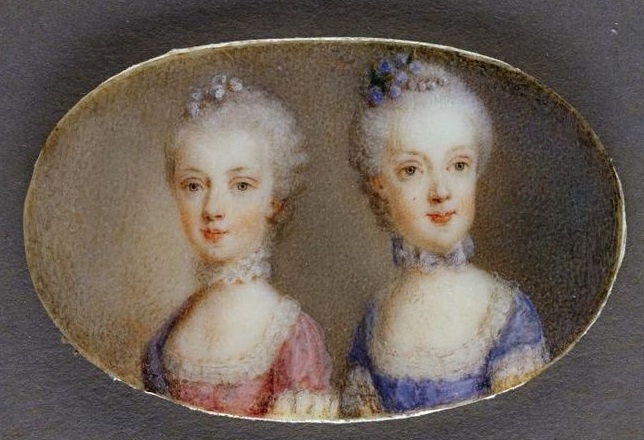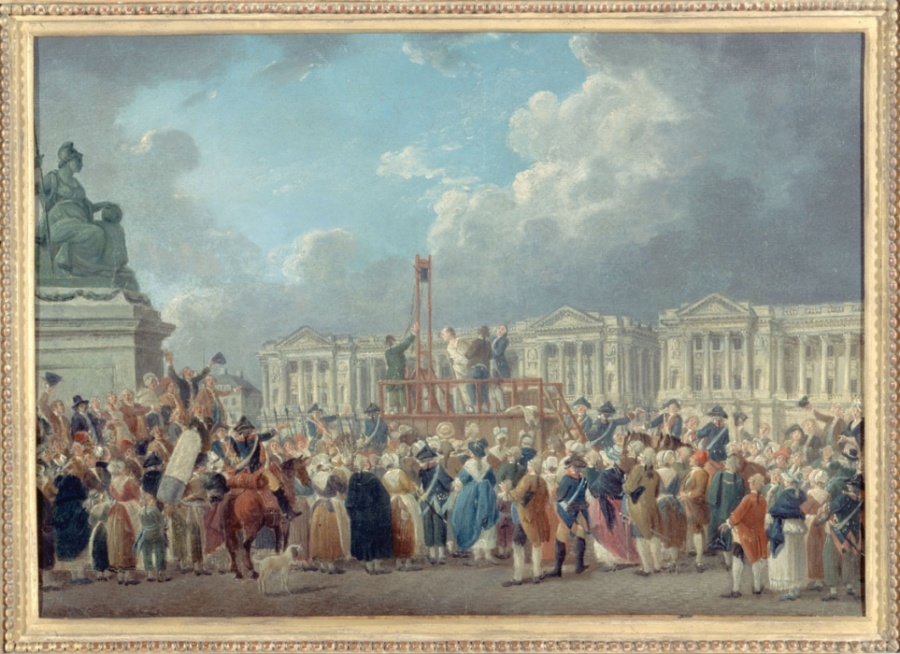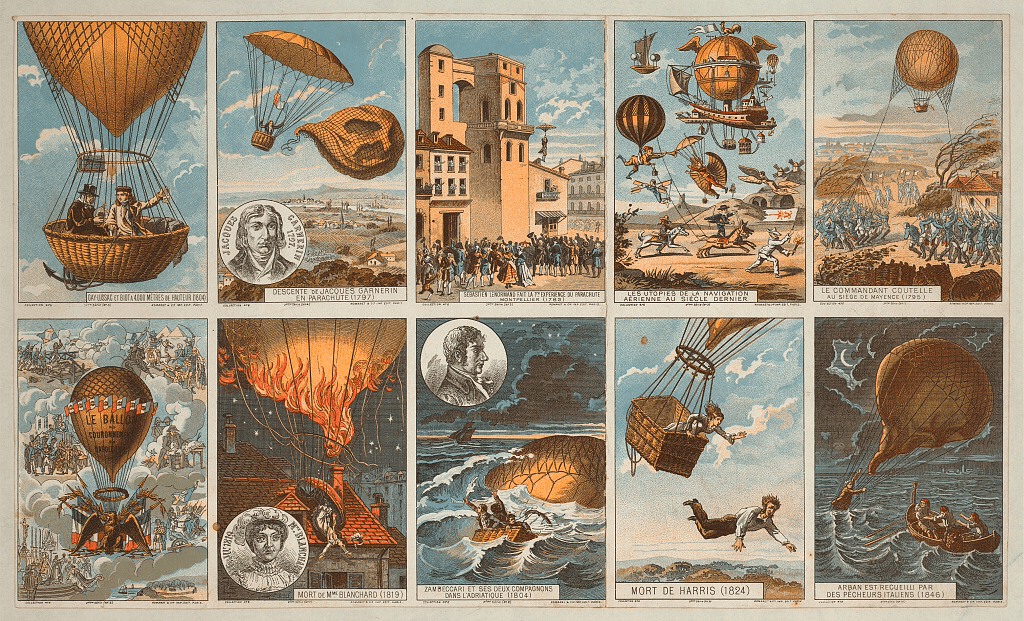On 2 November 1755, a tiny but healthy baby girl entered the world. Not an ordinary world, hers was the sprawling royal Hofburg complex in Vienna where kings and queens had been born since the 13th century. Nor was she an ordinary baby girl; she was Marie-Antoinette, Archduchess of Austria, who would be crowned Queen of France whilst still a teenager. She was born into privilege and wealth but would end her days in a dank prison on the Seine river; her life would be horrendously cut short by a revolutionary government thirsting for revenge. Here is the first of a series of articles on the life of Marie-Antoinette – daughter, wife, queen, mother, a fashion icon and a hated symbol of a repressive regime.
[Related post – Last words from the Guillotine]

Baby girl
Marie-Antoinette was the 15th child of Maria Theresa and Francis I, Empress and Emperor of the Holy Roman Empire. The Empress had already produced four heirs to the throne, so an eighth surviving daughter, said to be as alike her mother as two drops of water, was not a great disappointment. She was immediately given into the care of a wet-nurse, as breast-feeding was rarely practiced by royal mothers. Firstly, Maria-Theresa did not want her shapely bosom to lose its roundness when on display in the latest fashions; and secondly, women were discouraged from sleeping with their husbands whilst breastfeeding. The Emperor was widely known for his philandering, and the Empress preferred to share the marital bed as much as possible.
In hindsight, was the birthdate of Marie-Antoinette, the 2 November, a sign of a troubled future in her life? This was the Feast of All Souls, the great Catholic Day of the Dead, when requiem masses were said in memory of the departed. Chapels and churches were clothed in heavy black fabrics. For much of her life Marie-Antoinette preferred to celebrate her birthday on the day before – Feast of all Saints, which was much more joyous and colourful and suitable for a happy fête.
A great gala was celebrated on the day of the baptism, 3 November, and on the following days there were two more spectacles that were shown to the
public. The baby in whose honour these celebrations were held was given the names Maria Antonia Josepha Joanna (upon her marriage her name was changed to the more French sounding Marie-Antoinette). The prefix of Maria was established practice for all Habsburg princesses. With eight sisters and a mother called Maria – something or other, all were referred to by their second name. The new baby girl was known to all as Antoine.
Family life

Archduchess Maria Christina, WikiCommons
St Nicholas’s Day is traditionally celebrated on 5 or 6 December, and is a similar day to Christmas where children receive presents. This painting, by the Archduchess Maria Christina, shows the imperial family like a normal middle-class family enjoying their cosy home and new gifts. The Emperor, eating his breakfast, wears a robe and slippers, with a cap on his head instead of a wig. The Empress wears a plain dress and the 20 year old Maria Christina, who painted herself in the picture, looks like a governess rather than an archduchess. The Archduke Ferdinand is unsurprisingly rather upset at receiving a birch rod, probably for his naughtiness, while little Max, on the floor with his toys, is playing happily. A smiling Maria Antoine proudly holds out her new doll; at the age of seven she looks much like a doll herself.

The Empress, Maria Teresa, was the central figure of her children’s lives. She was strict, sometimes loving, and was alternately respected and feared by her multitude of offspring. Later in her life, Marie-Antoinette told a friend in confidence:
“I love the Empress but I’m frightened of her, even at a distance; when I’m writing to her, I never feel completely at ease.”
Music and dancing
Educating young archduchesses was not so much about the three Rs, it was instead more important to instill a sense of wifely obedience and submission. And a love of the arts.

Marie-Antoinette loved music, singing and dancing, playing the harp, harpsichord, flute and piano. Her love of arts and culture never abated throughout her life. She was naturally graceful, and after formal dancing lessons held herself in a distinguished and aristocratic manner. Ballet itself was becoming a popular diversion in the imperial and royal courts of Europe. As part of the magnificent celebrations of the (second) marriage of her brother Joseph to Josepha of Bavaria in 1765, an operetta which had been specially composed for the occasion was performed by and danced to by the imperial children. A ballet was considered the essential accompaniment to an opera, and in the picture above we can see Ferdinand and Marie-Antoinette, shepherd and shepherdess, while Max, the baby of the family, plays Cupid.
Antoine is exquisitely poised, her famous deportment already in evidence, the graceful arms well displayed. Her face is also instantly recognizable, not so much for the characteristically long neck on which it is set, as for the significantly high forehead.
Antonia Fraser, Marie-Antoinette, Phoenix, 2001
There is a well known story that in 1762, a young Wolfgang Amadeus Mozart, already a child prodigy, played his harpsichord for the Empress, the Emperor, and various of the imperial offspring (that part is undoubtedly true). The unverified side of the story is that Mozart slipped and fell on the polished floor, and Marie-Antoinette, who was almost exactly the boy’s age, caught him. He gave her a kiss and told her “I’ll marry you some day.” Unlikely, but romantic all the same. He was certainly impetuous; on this occasion he rushed up to the Empress and jumped on her lap, receiving a kiss in return.
Three palaces
As is common amongst European royalty, the court moved itself to different palaces according to the season. The stately Hofburg, where Marie-Antoinette was born, central to the capital, Vienna, was used in the winter months. Being the official residence of the Emperor, this was the most formidable of all the imperial palaces and freedom for the children was rare.

Less than ten kilometres away lay the magical palace of Schönbrunn, where the family and all their courtiers decamped for the summer. Given to Empress Maria Theresa as a wedding gift, she oversaw an enormous redecoration project which would rival the Palace of Versailles. Its vast gardens gave much pleasure to childhood adventure and exploit
But there was one castle which was a favourite with all the family: Laxenburg. Much smaller than your average Austrian imperial palace, when the Empress and Emperor loaded up their carriages and journeyed here around Eastertime, it was like a family holiday. With green spaces and open terraces, the children here felt a sense of personal freedom they could not achieve elsewhere. Laxenburg became synonomous with the idea of rural bliss, with romantic pastoral scenes on the walls, and a feeling of freshness, greenery and light. This would be important to the later life of Marie-Antoinette in France, when she would retreat to her Petit Trianon and build the Queen’s Hamlet at Versailles.
Sisters and best friends

Being the second-last sibling in a line of sixteen (thirteen survived infancy), can be challenging. Marie-Antoinette’s favourite sister was Maria Carolina, known to the family as Charlotte. Charlotte was three years older, but the two were as close as twins. They shared a governess and all their experiences, even infections; when one was sick the other invariably was too. As they grew older and therefore of a marriageable age (they were 12 and 15 years old), their mother became appalled at their wild and childish behaviour and saw fit to separate the two. Their education, such as it was, was designed to make them into princesses ready for magnificent marriages.
Political marriages
However, an archduchess was merely a pawn in the dynastic map of Europe, and the perfect match was not made of love, it was made in the face of political alliances.
In a letter to Charles III of Spain, Maria Theresa wrote:
‘I grant you with real pleasure one of my remaining daughters… I do currently have two who could fit, one is the Archduchess Amalia who is said to have a pretty face and whose health should promise a numerous progeny, and the other is the Archduchess Charlotte who is also very healthy and a year and seven months younger than the King of Naples.’
Charlotte was also considered as a potential bride of Louis Auguste, the new Dauphin (heir to the throne) of France. But the King of Naples had his way, and in 1768 Maria Carolina, no longer Charlotte, became Queen of Naples, and Marie-Antoinette would never see her again.
We can enter into the realm of historical speculation to imagine what may have happened if the more vivacious and intelligent Charlotte had become Queen of France instead of her sister. Perhaps Louis XVI, with a more determined wife by his side, may have developed more confidence in his ability to rule and to stand up to the revolutionary forces at play. It is something we shall never know.
As it was, there had to be an Austrian-French royal marriage. Why? The Treaty of Versailles, signed in 1756, less than a year after the birth of Marie-Antoinette, was a defensive pact between Austria and France in the event of an attack from Prussia or England. Shifting alliances in Europe and the rise of Prussia meant that both France and Austria had to put aside their former hostilities. However, in the eyes of the people, especially the French, theirs was not a natural alliance, and this would affect Marie-Antoinette in disastrous ways in the future.
Betrothal
Marie-Antoinette, Archduchess, and Louis Auguste, Dauphin, were officially betrothed in 1769 (see related post : Famous French Lovers). But upon inspection of her general knowledge and readiness to take on a significant role as a future queen of France, it was soon realised that the education of the young Antoine had been rather haphazard. She spoke using a mishmash of colloquial French, German and Italian, was very easily distracted, and most importantly, had never been taught properly to read and write. A tutor was dispatched from France to build upon her knowledge of French history and geography, but it was soon clear that she lacked any sort of intellectual rigour or curiosity.
French style, however, was another thing altogether. The French, like today, were seen as fashion icons, and when a Parisian hairdresser arrived in Vienna to reshape the hair of Marie-Antoinette, this ‘simple
decent manner’ soon led to all the young ladies of Vienna abandoning their curls in favour of style ‘à la Dauphine.’

Along with the hairdresser came French artist Joseph Ducreux, who painted the portrait of the future Dauphine to be sent to Versailles before the wedding. With great celebration amid a sense of finality, a grand fête was held at Laxenburg in June, with all present marvelling at the fairytale ending for the archduchess.
‘If one is to consider only the greatness of your position, you are the happiest of your sisters and all princesses.’
Empress Maria Teresa to Marie Antoinette

The fascinating story of the life of Marie-Antoinette continues in the next article – Part Two.
Much of the information on this article has been taken from the book by Antonia Fraser, Marie Antoinette: the journey, printed in 2001. This is one of my absolute favourite books ever.
further links
Do you want to visit the Schönbrunn Palace where Marie-Antoinette spent much of her childhood? There is an amazing 360 degree tour here, courtesy of Google Arts and Culture.
How about learning some French while watching this video, Was Marie-Antoinette never meant to be Queen of France?
I’d love to know how you feel about Marie-Antoinette. Leave me a comment in the box below!




Absolutely love Marie Antoinette – thanks for such a great post about her life. Will go check out that 360 degree tour with a cup of tea now 🙂
I love her too. I can only feel sorry for the tragic end to her life – she was a genuinely kind person who came to France at completely the wrong time.
Great article! I am a big fan of Marie Antoinette’s story and didn’t know very much about her childhood before reading this.😀
Thank you! I’m glad you enjoyed the article.